
Carolina Hurricanes 2023 draft overview
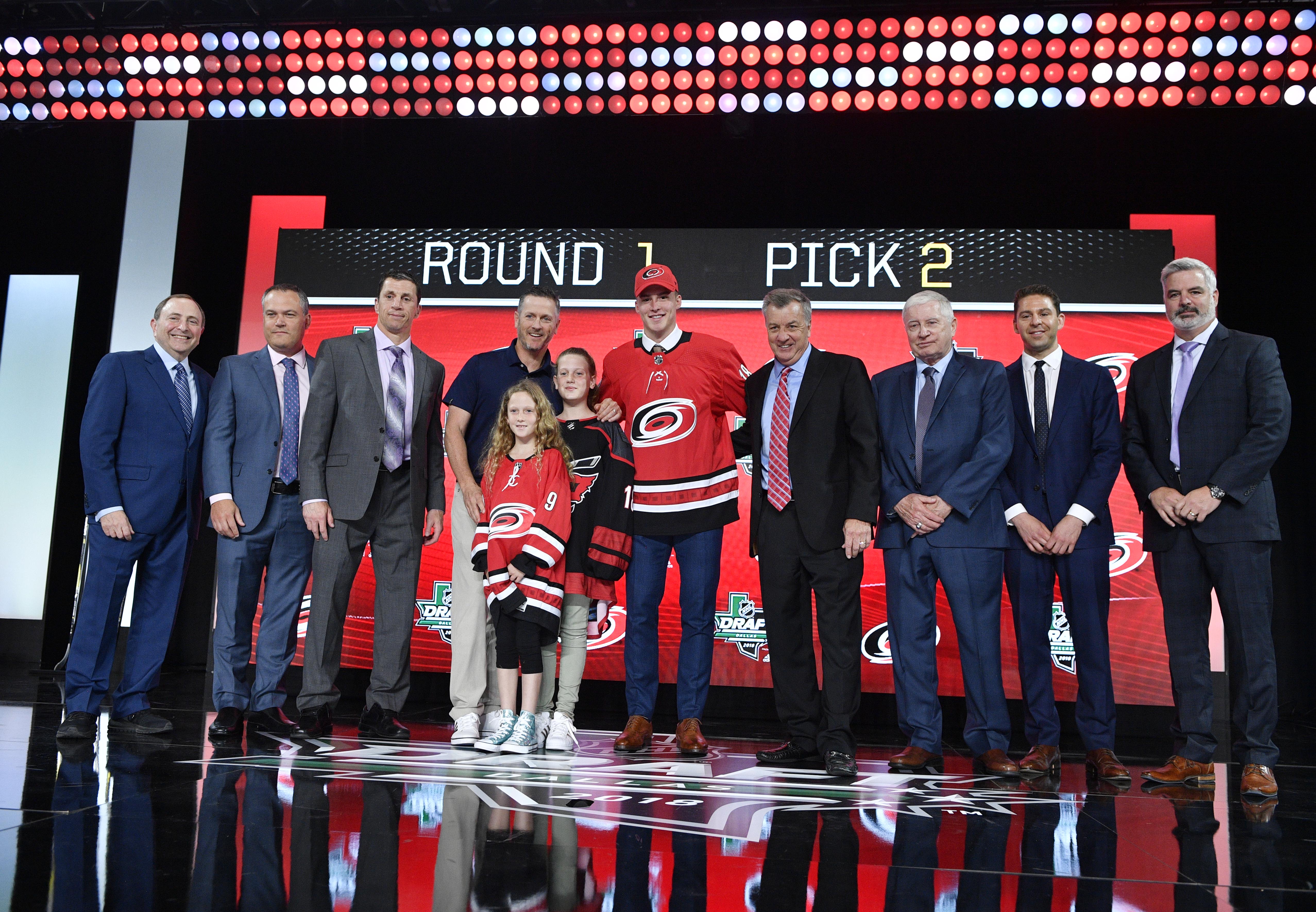 © Jerome Miron-USA TODAY Sports - Carolina Hurricanes 2023 draft overview
© Jerome Miron-USA TODAY Sports - Carolina Hurricanes 2023 draft overviewThe Carolina Hurricanes will be sitting on the floor of Bridgestone Arena with nine draft picks at their disposal including their own first-round (30), second-round (62), fourth-round (126), fifth-round (158), sixth-round (190) and seventh-round (222) picks as well as the Flyers' third-round (71), the Canucks fifth-round (139) and the Blackhawks sixth-round (163) selections.
The Hurricanes' latest regime, under new owner Tom Dundon and general manager Don Waddell, has been running the draft since 2018 and in that time, the Canes have drafted 46 players, of which four have already made NHL impacts.
Related Article
Lucky 30: Is there magic to be had late in the draft?
They've also made a habit of utilizing their draft picks to either move down and stock up additional selections or pick up key pieces to build up their roster.
Since 2018, the Hurricanes have traded a total of 22 picks including three first-round selections. In fact they haven't made a first round selection since 2020 (Seth Jarvis).
From those picks, or packages that have included those picks, they've received Jordan Martinook, Sami Vatanen, Joel Edmundson, Brady Skjei, Patrick Marleau, James Reimer, Erik Haula, Jesperi Kotkaniemi, Brent Burns, Shayne Gostisbehere, and 17 other draft picks including a 1st.
And while utilizing those picks to build up a better roster to compete for the Stanley Cup now is probably a better use of them, the Canes still very much value their longevity and drafting plays a vital role in that.
So let's take a deeper look into their current drafting trends:
Picks by Round
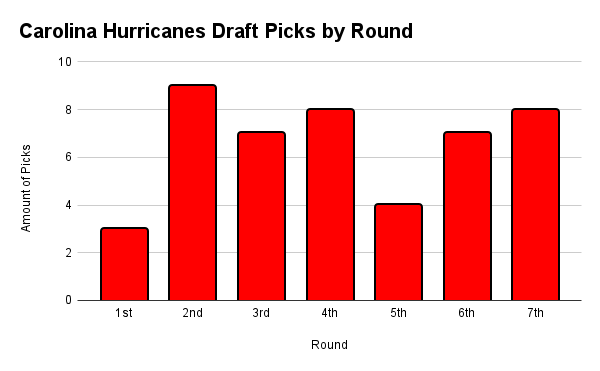
This iteration of the Hurricanes has emphasized quantity over quality when it comes to picks and they've done a tremendous job of stacking up on middle round selections.
A big part of that is due to the nature of being a high-finishing team as the Canes' first-round picks are either late enough into the draft to be okay with trading down or they're already been used as capital for trade packages.
Carolina has made just three first round selections since 2018 (Andrei Svechnikov, Ryan Suzuki, Seth Jarvis) and have picked more in the second round than any other round (9 times).
Positions Selected by Round
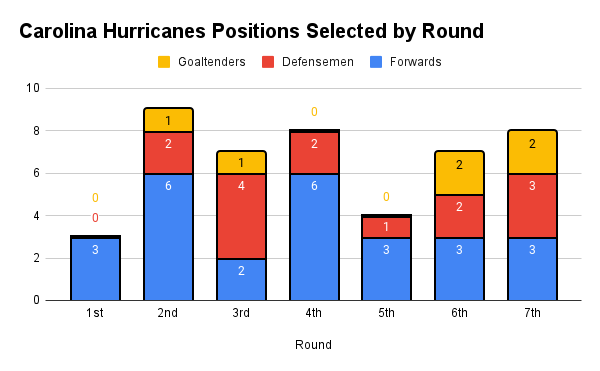
The bulk of the Hurricanes' draft picks over the last five seasons have been forwards (26), which makes logical sense as forwards are the most prevalent position on a hockey team.
Dundon's comments about not selecting a defensemen in the first round have also held true so far as well.
The Canes have seemingly made an emphasis to consistently draft goaltenders too, which is a solid strategy as goalie is the most volatile and unpredictable position.
Picks by Nationality
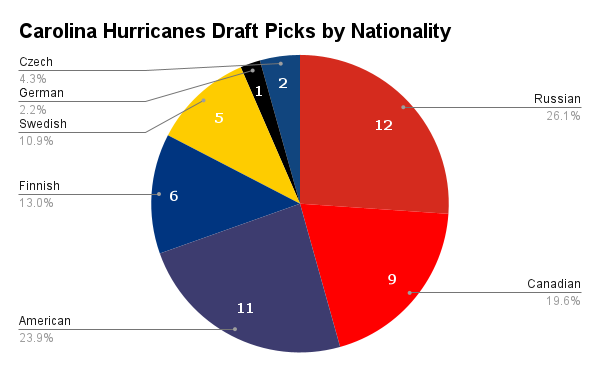
While a lot of teams tend to stray away from Russian-born prospects, that is absolutely not the case for the Hurricanes who have drafted more Russians than any other nationality since 2018.
The team's drafting philosophy is to draft the best players regardless of their passport, and that has held true over the last several years.
Americans make up the next largest chunk of prospects followed by Canadians, who come in at a surprising third, perhaps evident of the shrinking gap in world-wide development for players.
The Canes have also steadily drafted from both Sweden and Finland and have taken flyers on players from Germany and Czechia.
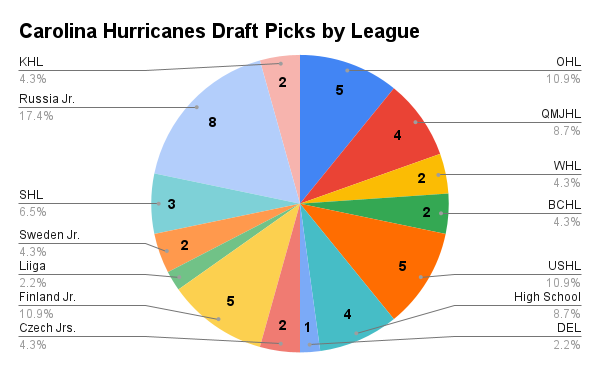
Breaking it down even more by league selected from, the Hurricanes are actually pretty evenly spread amongst most of the world's major junior markets.
Obviously a bigger portion has come from the Russian juniors, but there are no real outliers outside of them. The next three highest selected from leagues include the Finnish juniors, OHL and USHL - of which three of those players have come from the USNDT.
With the draft nearly upon us, the question on every Hurricanes' fans mind is what will happen with pick number 30? Will they keep it or will they trade it away and if they keep it, who will be coming to Carolina?
Related Article
THN Mock Draft: No. 30 Pick




